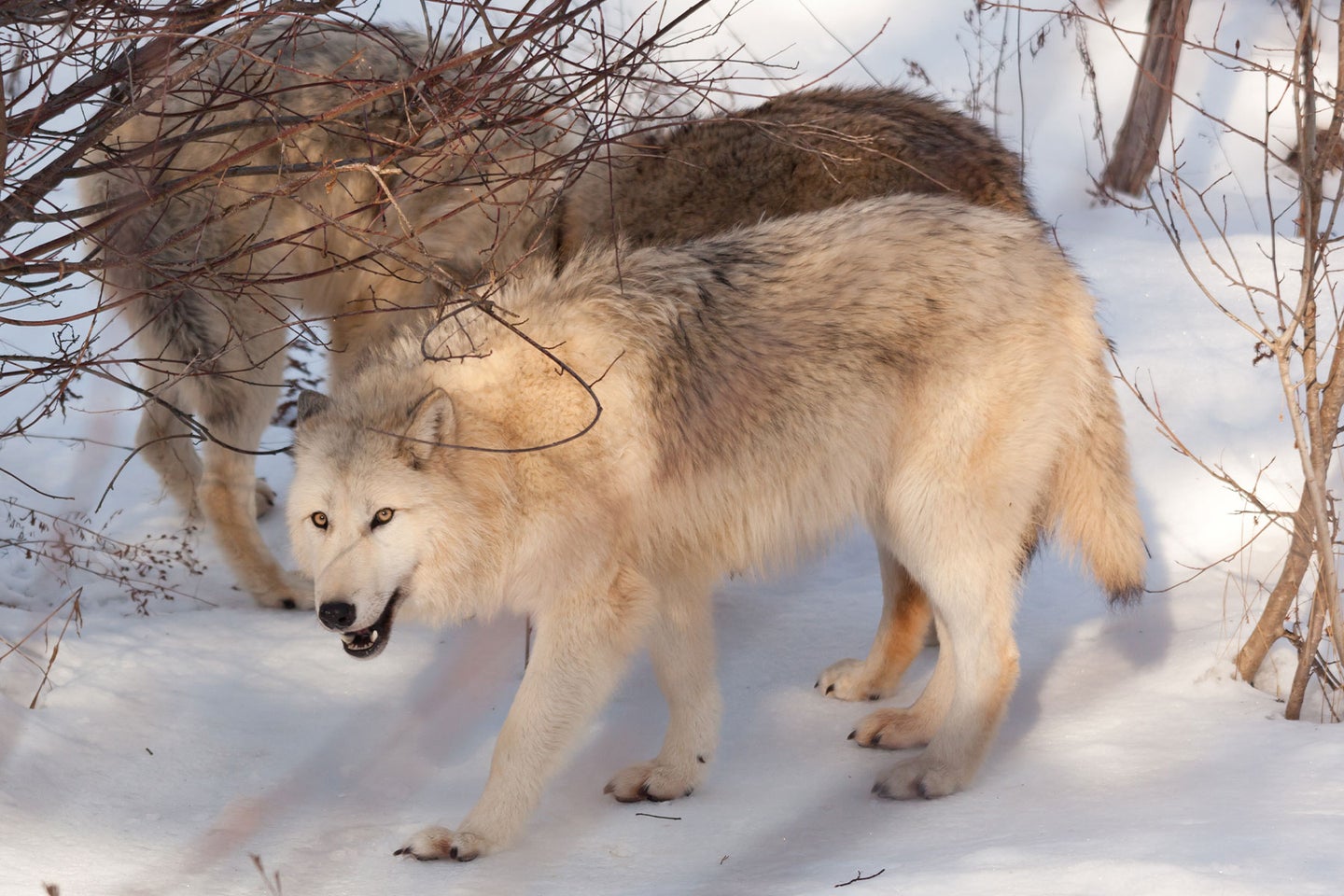Federal Lawsuit Would Significantly Reduce Wolf Trapping Seasons in Idaho

Idaho is home to an estimated 1,100 gray wolves. Adobe Photostock.
On January 5, a group of 13 wildlife-advocacy groups asked a federal judge in Idaho to put an end to wolf trapping in the Gem State during the time of year when grizzly bears are not in their dens hibernating. The groups, which include Earth Justice, the Center for Biological Diversity, the Humane Society of the United States, and the Sierra Club, say wolf traps cause “indiscriminate harm” to the federally-protected bears. But the state of Idaho argues that licensed trappers who adhere to rules and regulations aren’t posing a threat to the state’s grizzlies.
The groups’ lawsuit states that since the ESA-delisting of gray wolves in 2011, “trapping and snaring has resulted in wolf trappers in Idaho capturing threatened grizzly bears and lynx in wolf traps and snares.” It goes on to argue that the court should deem the state of Idaho in violation of the Endangered Species Act (ESA), and force the Idaho Department of Fish & Game (IDFG) to bring its wolf trapping regulations “into compliance with the ESA.”
Arguing on behalf of the state, Deputy Attorney General Kathleen Trever said that while two grizzlies were caught in traps in Idaho’s northern panhandle in 2020, those trappers weren’t following the state’s rules. If legally-set traps were posing a threat to grizzlies or other protected species, the IDFG would be capable of making its own adjustments to its trapping rules. “If something did happen, which we have not seen, the state has a long history of adapting,” she recently told the Capitol Press, “whether to refine its seasons or make additional adjustments or requirements.”
Both the IDFG and the Idaho Trappers Association declined to comment when contacted by Field & Stream, citing the pending litigation. The IDFG does have an official policy of working with hunters and trappers to reduce wolf populations in hopes of mitigating livestock depredation and reducing predation pressure on the state’s elk herds. The state’s wolf hunting and trapping seasons currently run year round with no bag limits.
The IDFG said that at last count there were approximately 1,100 wolves in the state. Those estimates were based on camera trap surveys conducted statewide throughout 2022. That recent estimate was said to be down by 13 percent, or roughly 200 wolves, since the state expanded its wolf hunting and trapping seasons in early 2021.
“We are encouraged by efforts that have resulted in a drop in wolf numbers, and this aligns with our long-term goal to reduce Idaho’s wolf population,” said former IDFG Director Ed Scrivner at the time of the most recent population estimate. “We’d like to see it fluctuate around 500, which is outlined in our draft wolf management plan and aligns with the federal rule that delisted wolves.” Scrivner has since been replaced by acting director Jim Fredricks.
The post Federal Lawsuit Would Significantly Reduce Wolf Trapping Seasons in Idaho appeared first on Field & Stream.
Articles may contain affiliate links which enable us to share in the revenue of any purchases made.
